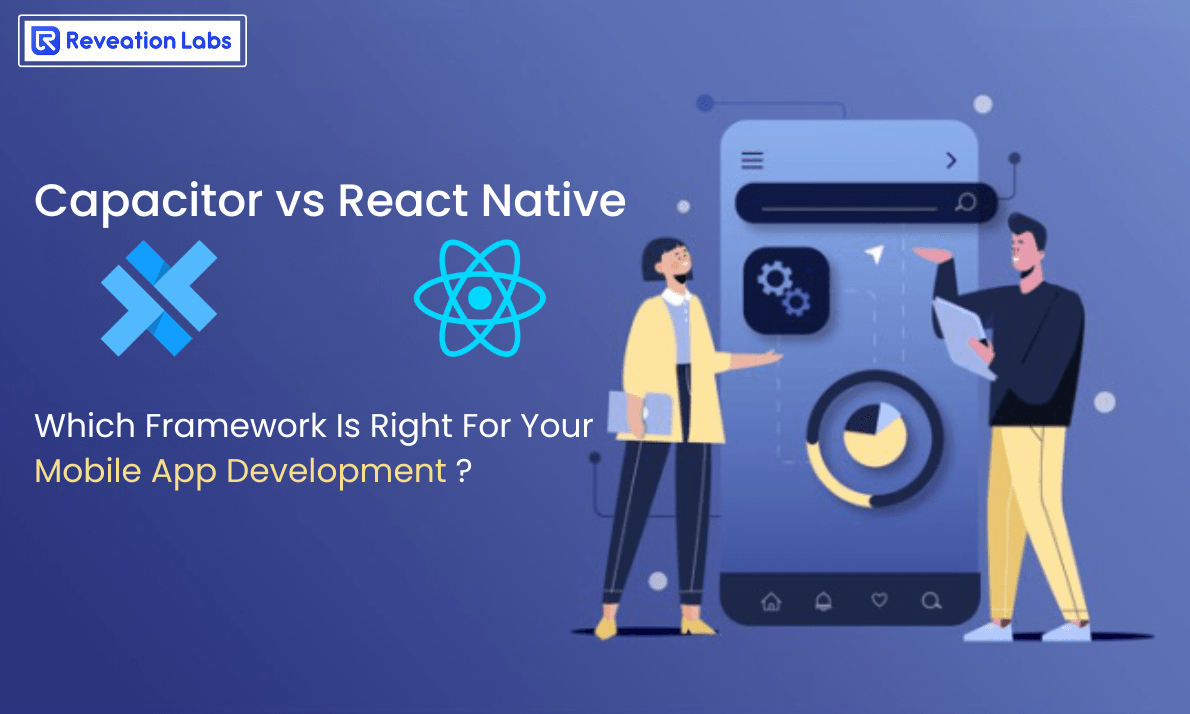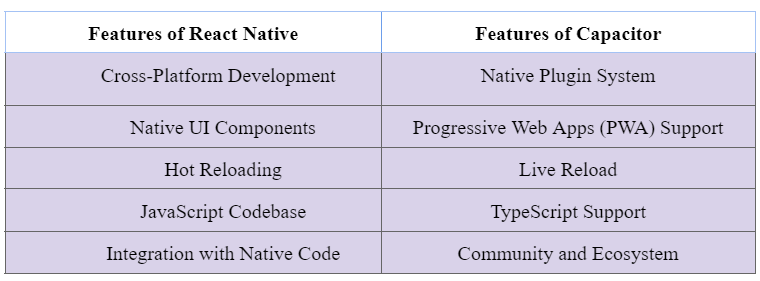Capacitor vs React Native: Which Framework Is Right For Your Mobile App Development?

What is React Native?
React Native is an open-source mobile application framework created by Facebook. It allows developers to build mobile applications for iOS, Android, and other platforms using the React library for building user interfaces.
React Native is designed to make it easy to build high-quality, native mobile applications with a familiar, declarative programming model similar to React. This means that developers can use the same programming concepts, tools, and practices that they are already familiar with when building web applications with React.
One of the main advantages of React Native is that it allows developers to write code once and deploy it across multiple platforms, reducing development time and costs. Additionally, because React Native mobile applications are compiled into native code, they can provide high performance and a native look and feel, making them indistinguishable from applications built with traditional native development tools.
What is Capacitor?
Capacitor is a cross-platform development for building web applications that can be deployed as native mobile applications for iOS, Android, and other platforms. It was developed by the team behind the Ionic Framework and released in 2018 as an alternative to the Cordova/PhoneGap framework.
Capacitor enables developers to use web technologies such as HTML, CSS, and JavaScript to build mobile applications with a native look and feel. It provides a set of APIs that allow developers to access native features and functionality of mobile devices, such as cameras, geolocation, and sensors.
Capacitor is built on top of modern web standards and is designed to work seamlessly with modern web development frameworks such as React, Vue, and Angular. It also provides a powerful command-line interface that simplifies the process of building, testing and deploying mobile applications.

Is Capacitor or React Native faster?
The performance of Capacitor and React Native can vary depending on the specific use case and the underlying hardware of the target device.
Ultimately, the choice between Capacitor and React Native should not be based solely on performance, as both frameworks have their strengths and weaknesses, and the best choice depends on the specific requirements of the project and the skills and preferences of the development team.
Difference between React Native and Capacitor
React Native and Capacitor are both frameworks used for developing cross-platform mobile applications. While both frameworks share some similarities, some critical differences between them can affect which one is best for your particular use case.
1. Language and Framework:
React Native is based on the React framework and uses JavaScript as its programming language. On the other hand, Capacitor is a framework built on top of the web technologies HTML, CSS, and JavaScript.
2. User Interface Components:
React Native has many built-in components for building user interfaces, including buttons, text inputs, and scroll views. Capacitor does not have built-in UI components but provides access to web components to build user interfaces.
3. Code Reusability:
React Native allows for code reusability across different platforms, as the same codebase can be used to build iOS and Android applications. Capacitor also supports code reuse but is more focused on providing a common web technology layer that can be used across platforms.
4. Development Workflow:
React Native uses a hot-reload feature that allows developers to see changes to their code in real time without rebuilding the entire app. Capacitor uses a live-reload feature that reloads the app each time the code changes, which can take longer.
5. Plugins and Native Functionality:
Capacitor offers a plugin system that makes it easy to add native functionality to an app using JavaScript. At the same time, React Native has a more extensive set of built-in native modules. However, Capacitor's plugin system allows developers to use native code and third-party libraries more easily.
6. Performance:
React Native is known for being faster than Capacitor, thanks to its use of a virtual DOM. Capacitor has significantly improved performance since its initial release, but it still may not perform as well as React Native in some cases.
7. Platform Support:
React Native supports iOS, Android, and web platforms, while Capacitor supports iOS, Android, and web platforms, as well as desktop platforms like macOS, Windows, and Linux.
8. Development Tools:
React Native provides a command-line interface (CLI) and rich debugging and profiling tools. Capacitor has a similar CLI but fewer debugging and profiling tools.
Comments
Post a Comment